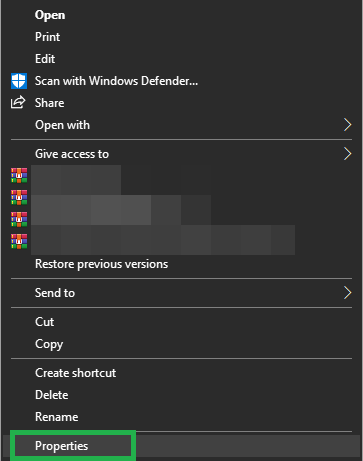How to Fix ‘No such File or Directory’ Error in SCP?
SCP stands for Secure Copy Protocol and it is based on the “Secure Shell” protocol. It provides a method for transferring files between computers. In this transfer, either both the computers can be remote hosts or one computer can be a localhost and the other, a remote host. Quite recently, a lot of users have been getting the “No Such File or Directory” Error while trying to copy files with SCP.

In this article, we will discuss some of the reasons due to which this issue is triggered and also provide viable solutions to fix it completely. Also, we will look into some of the reasons due to which it is triggered. Make sure to follow the guide carefully and accurately to avoid conflict.
What Causes the “No Such File or Directory” Error in SCP?
After receiving numerous reports from multiple users, we decided to investigate the issue and devised a set of solutions to fix it completely. Also, we looked into the reasons due to which it is triggered and listed them as follows.
- Incorrect Command: In some cases, the command that is being used by the user to copy the file might not be correct. You must modify the copy command to fit the current situation in which you are copying. The commands for copying files and a whole directory are different. Also, the command to copy between two computers with different configurations is changed as per the requirements.
- Port Number: It is also possible that the port number for copying files between computers hasn’t been specified. The correct port must be forwarded before trying to copy files between two hosts.
- Incorrect Login: If you are currently logged into the server and are trying to copy the files to a desktop, you might experience this error because the server tries to find the local path within the server. This can be prevented by logging out of the server path.
- File Permissions: In some cases, the permissions of the files that are to be copied might be limited to “Read-Only”. This can prevent the server from accessing the files and from being able to copy them. It is important the Read and Write permissions are provided for the files.
Now that you have a basic understanding of the nature of the problem, we will move on towards the solutions. Make sure to implement these in the specific order in which they are presented to avoid conflict.
Solution 1: Using Correct Commands
You must use the correct command depending upon the configuration of hosts between which you want to transfer the files. For this, we will be listing some of the commands that can be used to transfer files between different host configurations.
To Copy From Local Host to Remote Host
The Localhost is the actual computer to which you have physical access. The Remote Host is the one to which the user doesn’t have any physical access and it is located in a distant server. To transfer files from a Localhost to a Remote Host, you have to use the following command configurations.
$ scp "the_file" your_username@the_remote_host:the/path/to/the/directory
An example to copy a text file named “Alexa.txt” will be as follows.
$ scp Alexa.txt your_username@remotehost.edu:/some/remote/directory
In the same way, you can copy a whole directory in the following way
$ scp -r "the_directory_to_copy" your_username@the_remote_host:the/path/to/the/directory/to/copy/to
An example to copy a directory named “Alexa” would be as follows.
$ scp -r foo your_username@remotehost.edu:/some/remote/directory/bar
To Copy From Remote Host to Local Host
If you wish to copy a file from the Remote Host to a Local Host, the command configurations differ from the original ones. Below are indicated the appropriate commands to copy files between a Remote Host and a Localhost.
To copy a File, use the following command
$ scp your_username@the_remote_host:the_file /your/local/directory
To copy a file named “Alexa.txt“, use the following commands
$ scp your_username@the_remote_host:Alexa.txt /your/local/directory
Solution 2: Identifying Port Number
The Port Number of the remote host must be identified before copying the file to the computer. For that, we will be adding the port number while initiating the copying process.
You can use the following command to copy between computers while indicating the port number.
$ scp -P port_number your_username@the_remote_host:the_file /your/local/directory
This same command can be used to indicate the port number while copying to or from a remote host. You just need to add the “-P (Port number)” after the “$ scp ” portion of the command.
Solution 3: Changing Permissions
The appropriate permissions must be provided to the file while copying them between computers. Therefore, in this step, we will be indicating the process to change a file’s permissions. For that:
- Right–click on the file that you are trying to copy.
- Click on “Properties” and select the “Security” tab.

Clicking on “Properties” - Make sure that all the permissions are provided to the “System” and the “Administrator“.

Clicking on “Allow” for all Permissions
Note: Also, make sure that you don’t log in to the server path while copying the files.




